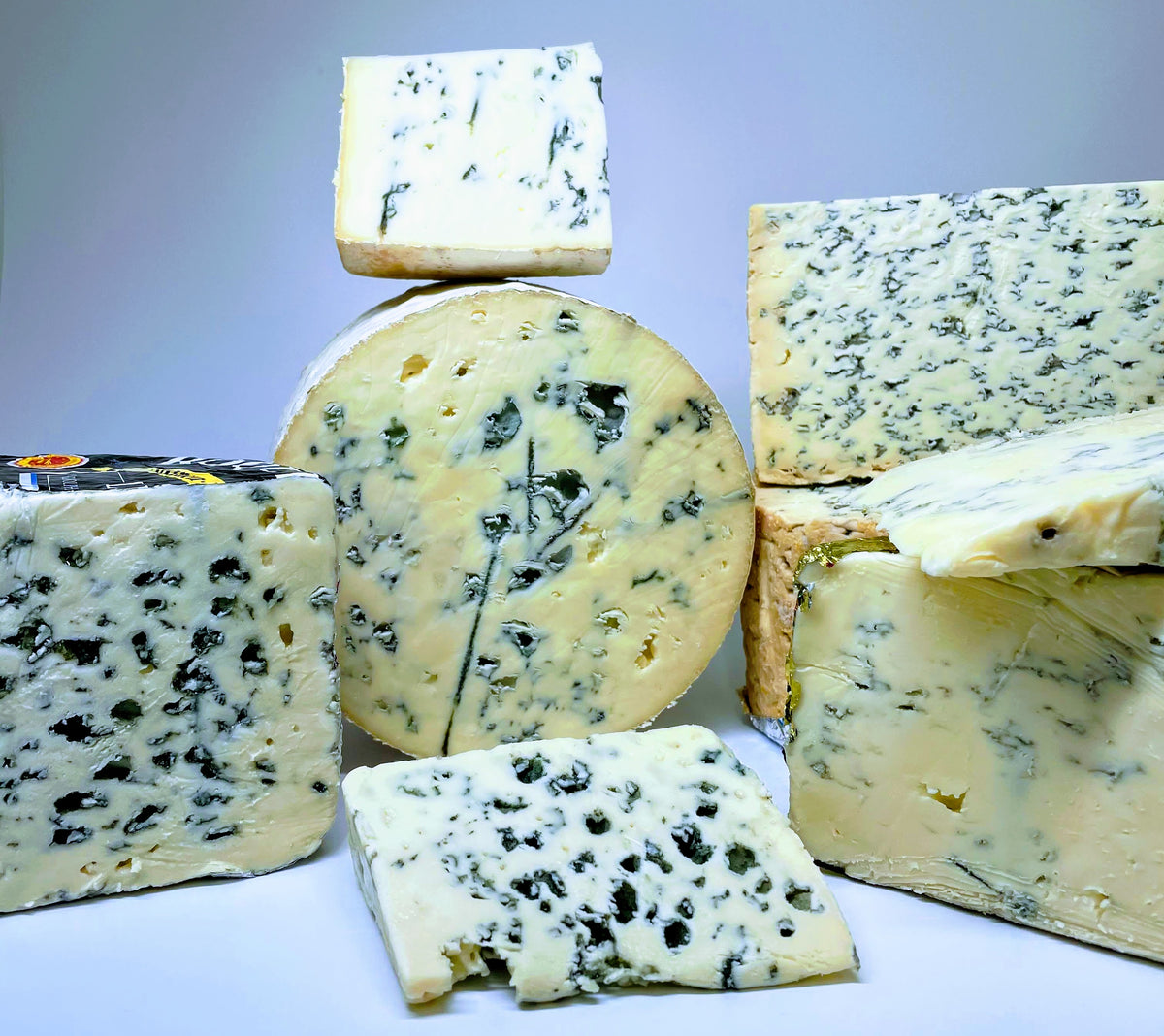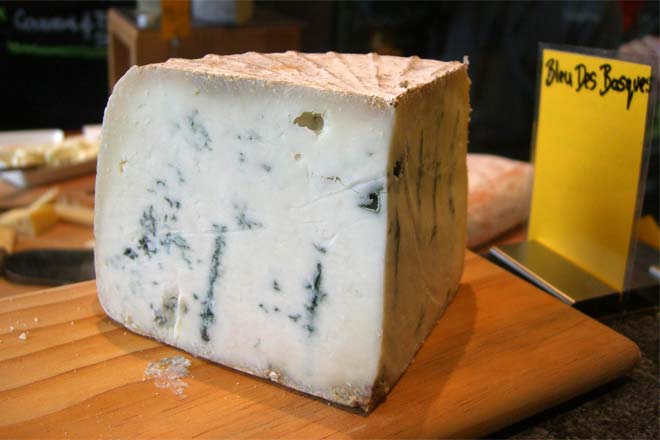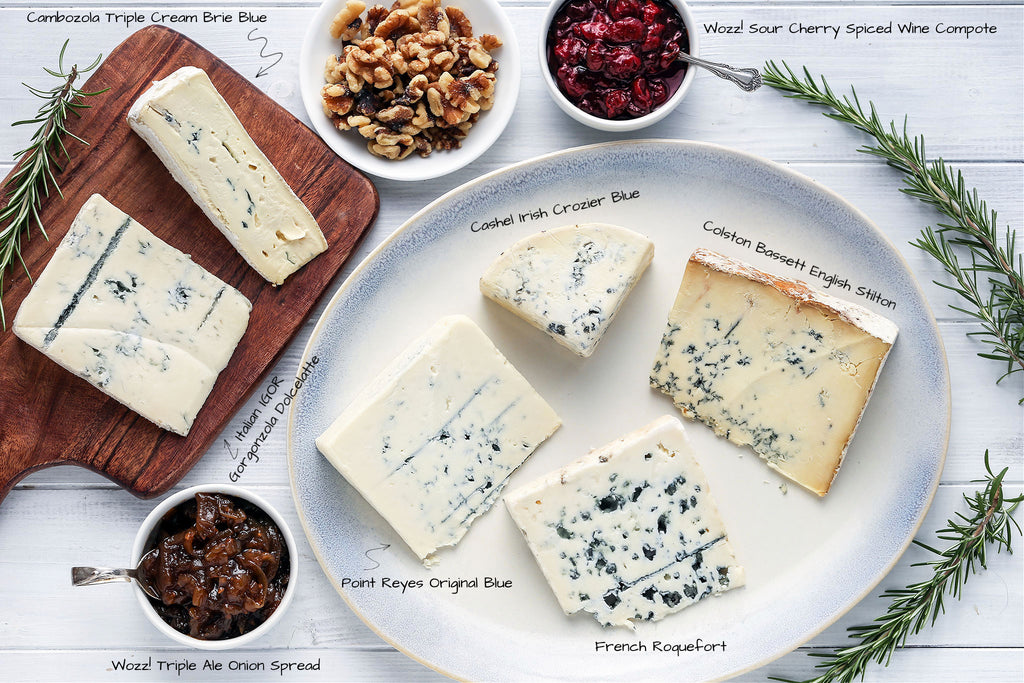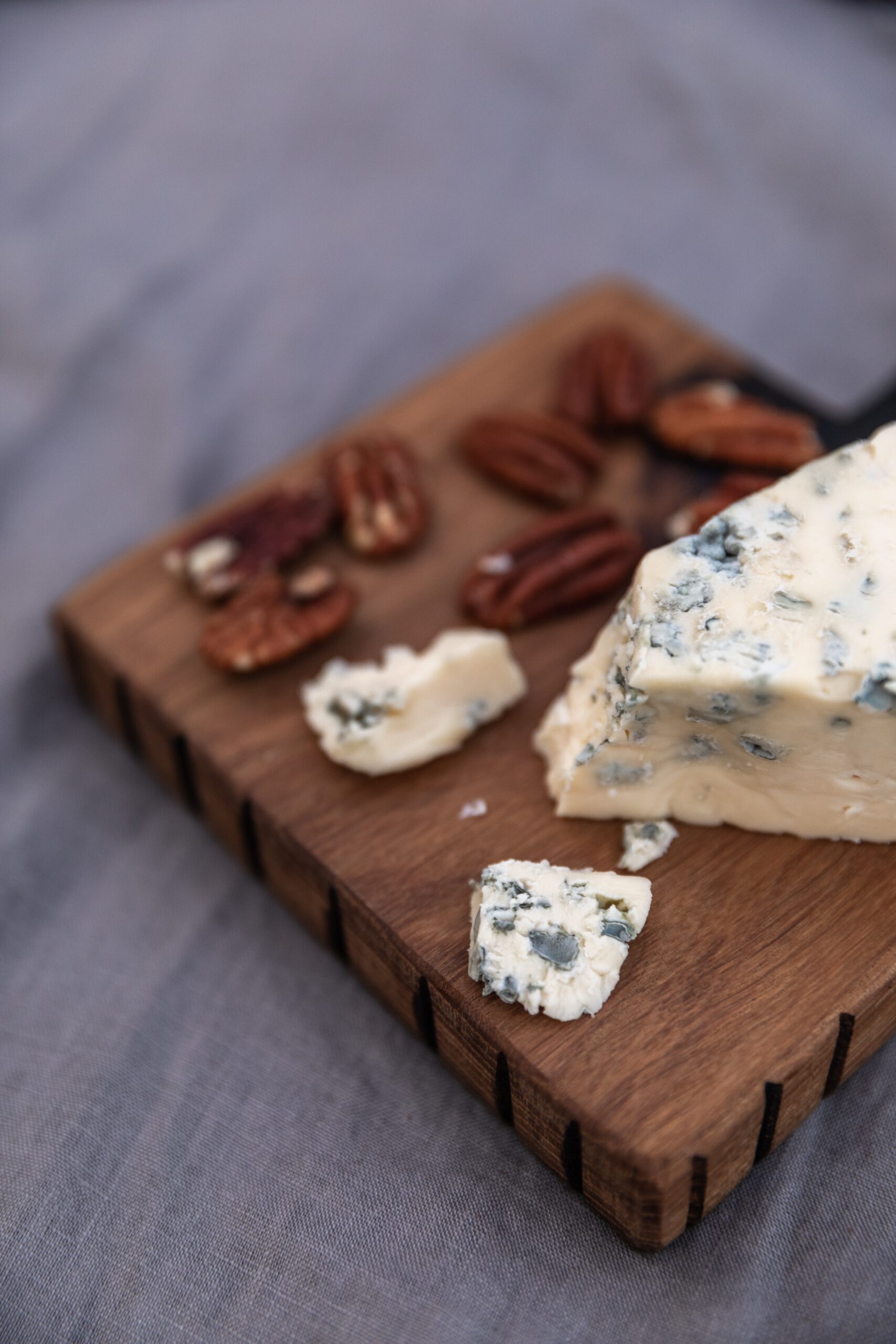Introduction

Gorgonzola Cheese and Blue Cheese are both popular varieties of blue cheese that offer unique flavors and characteristics. While they share similarities, such as their blue-green veins and creamy textures, there are key differences that set them apart. Understanding these differences can help cheese lovers make informed choices when it comes to flavor preferences and culinary uses. In this article, we will delve into the origins and production processes of Gorgonzola Cheese and Blue Cheese, explore their taste profiles, examine their nutritional values, provide pairing suggestions, and offer creative recipe ideas. Whether you’re a fan of tangy and creamy Gorgonzola or bold and earthy Blue Cheese, this cheese showdown will provide insights that will enhance your cheese eating experience.
Key Differences Between Gorgonzola Cheese And Blue Cheese
While Gorgonzola Cheese and Blue Cheese are both types of blue cheese, there are several key differences between the two. Gorgonzola cheese is a specific variety made using cow’s milk, while blue cheese is a more general category that can be made with various types of milk like cow, goat, or sheep. Gorgonzola cheese tends to be softer and milder in flavor compared to other blue cheeses. Additionally, Gorgonzola cheese has a distinct creamy and slightly sweet taste, while blue cheese can vary in its flavor profile from sharp and tangy to stronger and earthy. With these differences in mind, cheese lovers can choose their preferred blue cheese based on their desired taste and intensity.
Gorgonzola Cheese
Gorgonzola cheese is a unique variety of blue cheese that originates from the Lombardy and Piedmont regions of Italy. It is made using cow’s milk and is known for its creamy and slightly sweet flavor. Gorgonzola cheese has a crumbly yet smooth texture, with distinctive blue-green veins running throughout. It is aged for around three to four months, allowing the flavors to develop and intensify. Gorgonzola cheese adds a delicious punch to salads, pasta dishes, and even desserts. Its versatility and rich taste make it a popular choice among cheese enthusiasts.
Gorgonzola Cheese Origin And Production Process

Gorgonzola cheese has its origins in the Lombardy and Piedmont regions of Italy. The cheese gets its name from the town of Gorgonzola, where it is believed to have been first produced in the 9th century.
To make Gorgonzola cheese, cow’s milk is used as the base. The milk is heated and combined with bacterial cultures and rennet to initiate the curdling process. After the curds have formed, they are cut, drained, and transferred to molds.
Once in the molds, the cheese is pierced with needles to allow oxygen to enter and promote the growth of blue and green mold. The cheese is then aged in a cool environment for three to four months, during which time the distinctive blue-green veins develop.
The result is a creamy and slightly sweet cheese with a crumbly texture and intense flavor. Gorgonzola cheese is meticulously crafted using traditional methods, ensuring a unique and delightful experience for cheese lovers.
Gorgonzola Cheese Flavor Profile And Texture
Gorgonzola cheese is known for its distinct flavor profile and texture. It has a creamy yet crumbly texture, making it easy to spread or crumble over dishes. The flavor of Gorgonzola cheese is rich and slightly sweet, with a tangy and earthy undertone. The blue and green veins running through the cheese contribute to its complex flavor, adding a sharp and pungent taste. This unique combination of flavors makes Gorgonzola cheese a versatile and delicious choice for salads, pasta dishes, and even desserts. Whether you prefer a mild or strong cheese, Gorgonzola is sure to satisfy your taste buds.
Blue Cheese
Blue cheese is a diverse category of cheese that encompasses a variety of flavors and textures. Made from the milk of sheep, goats, or cows, blue cheese gets its name from the distinctive blue or green veins running through it. The fermentation process allows the growth of specific mold cultures, which gives blue cheese its characteristic tangy and pungent taste. From creamy and crumbly varieties like Roquefort to milder options like Stilton, blue cheese offers a range of culinary possibilities. Its bold flavor makes it a perfect addition to salads, dressings, burgers, and even desserts like cheesecakes. Blue cheese lovers appreciate its complex taste and the way it adds depth to any dish.
Blue Cheese Varieties And Production Regions

Blue cheese comes in various forms and is produced in different regions around the world. Some popular varieties include Roquefort, Stilton, and Gorgonzola.
Roquefort is a French blue cheese aged in natural caves, giving it a unique flavor and texture. Stilton, from England, is known for its crumbly and creamy consistency. Gorgonzola, hailing from Italy, has a softer texture and a milder taste compared to other blue cheeses.
These cheeses are made using specific strains of bacteria and mold, and their production regions contribute to their distinct characteristics. Whether you prefer the tangy and bold flavors of Roquefort or the creaminess of Stilton, blue cheese offers a wide range of options to suit every palate.
Blue Cheese Taste Profile And Culinary Uses
Blue cheese has a distinct taste profile that is loved by many cheese enthusiasts. It provides a pungent, tangy, and sometimes sharp flavor that adds a bold punch to any dish. The crumbly texture of blue cheese further enhances its flavor experience.
Blue cheese is a versatile ingredient and can be used in various culinary preparations. It is commonly crumbled over salads to add a unique and intense flavor. Blue cheese also pairs well with fruits such as pears, apples, and grapes, creating a delightful combination of sweet and savory. In addition, blue cheese can be melted into creamy pasta sauces or used as a topping for burgers and steaks, providing a rich and decadent element to the dish.
Overall, blue cheese brings a distinct and bold flavor to various culinary creations, elevating them to a whole new level.
Nutritional Value
When it comes to the nutritional value of Gorgonzola cheese and blue cheese, there are some similarities and differences. In terms of protein and fat content, both cheeses are relatively high, with around 24% protein and 73% fat. However, blue cheese tends to have slightly higher carbohydrate content, at around 4% compared to Gorgonzola’s 2%. When comparing vitamins and minerals, blue cheese generally contains more minerals than Gorgonzola.
It’s important to note that both cheeses are higher in calories, so they should be enjoyed in moderation as part of a balanced diet.
Gorgonzola Cheese Nutritional Content

Gorgonzola cheese is known for its rich and creamy flavor, but it also packs a nutritional punch. In a 100g serving, Gorgonzola cheese contains approximately 356 calories, with 24% of the calories coming from protein and 73% from fat. This cheese is also a good source of calcium, providing 22% of the recommended daily intake. It also contains vitamins, such as vitamin B12 and vitamin A, as well as other essential minerals like phosphorus and zinc. However, due to its high fat and calorie content, it’s important to enjoy Gorgonzola cheese in moderation as part of a balanced diet.
Blue Cheese Nutritional Comparison
When it comes to comparing the nutritional content of blue cheese and Gorgonzola cheese, there are a few key differences to consider. In a 100g serving, blue cheese contains approximately 353 calories, with a higher fat content of 32.14g and lower carbohydrates at 2.34g. On the other hand, Gorgonzola cheese has slightly fewer calories at 356, with a similar fat content of 28.74g but slightly higher carbohydrates at 3.57g. Additionally, blue cheese provides more calcium, with 357mg compared to Gorgonzola’s 528mg. Both cheeses are good sources of protein, with blue cheese and Gorgonzola cheese both containing around 21g per serving.
Pairing Suggestions
Pairing Gorgonzola cheese and blue cheese with the right accompaniments can enhance the flavors and create a memorable dining experience. When it comes to wine, both cheeses pair well with a variety of options. Gorgonzola pairs beautifully with sweet wines like port or dry white wines such as Sauvignon Blanc. Blue cheese, on the other hand, pairs well with bold red wines like Cabernet Sauvignon or even a sweet dessert wine like Sauternes. In terms of food pairings, Gorgonzola shines when paired with fruits like pears or figs, while blue cheese is a classic addition to salads and pairs well with honey or nuts. Experiment with different combinations to find your favorite pairing. Try a Gorgonzola and pear salad or blue cheese with honey drizzled over crusty bread for a delightful culinary experience.
Best Wine And Food Pairings With Gorgonzola And Blue Cheese

When it comes to pairing Gorgonzola and blue cheese with the right accompaniments, the flavors can truly shine. In terms of wine, Gorgonzola pairs beautifully with sweet options like port or dry white wines such as Sauvignon Blanc. Blue cheese, on the other hand, pairs well with bold red wines like Cabernet Sauvignon or even a sweet dessert wine like Sauternes. When it comes to food pairings, Gorgonzola is enhanced by the natural sweetness of fruits like pears or figs, while blue cheese is a classic addition to salads and pairs well with honey or nuts. Experiment with different combinations to find your favorite pairing. Try a Gorgonzola and pear salad or blue cheese with honey drizzled over crusty bread for a delightful culinary experience.
Creative Recipe Ideas Featuring Gorgonzola And Blue Cheese
Gorgonzola and blue cheese are versatile ingredients that can elevate a variety of dishes. Here are some creative recipe ideas to explore the delicious flavors of these cheeses:
- Grilled Pear and Gorgonzola Crostini: Spread creamy gorgonzola cheese on toasted baguette slices, top with grilled pear slices, and drizzle with honey for a sweet and savory appetizer.
- Blue Cheese and Bacon Stuffed Mushrooms: Fill large mushroom caps with a mixture of blue cheese, cooked bacon, and breadcrumbs. Bake until golden and enjoy the rich and indulgent flavors.
- Gorgonzola and Spinach Stuffed Chicken Breast: Stuff chicken breasts with a mixture of gorgonzola cheese and sautéed spinach. Bake until the chicken is cooked through and the cheese is melted and bubbling.
- Blue Cheese and Walnut Salad: Toss mixed greens, crumbled blue cheese, and toasted walnuts in a tangy vinaigrette dressing. The combination of creamy cheese and crunchy nuts adds depth to the salad.
- Gorgonzola and Pear Pizza: Spread a thin layer of gorgonzola cheese on a pizza crust, top with thinly sliced pears and caramelized onions. Bake until the crust is crispy and the cheese is melted and bubbly.
These recipe ideas showcase the versatility of gorgonzola and blue cheese, adding bold and complex flavors to your meals. Experiment with these recipes or use them as inspiration to create your own delicious dishes. Enjoy the delightful combination of cheese and other complementary ingredients.
Conclusion
In conclusion, the showdown between Gorgonzola cheese and Blue cheese highlights the distinct characteristics and flavor profiles of both types of cheese. Gorgonzola cheese offers a creamy texture and a milder, sweeter flavor, making it suitable for creamy dressings and pasta sauces. On the other hand, Blue cheese provides a sharp, tangy taste and crumbly texture, making it ideal for adding a bold punch to salads and burgers. Ultimately, the choice between Gorgonzola cheese and Blue cheese comes down to personal preference and the desired flavor profile for a specific dish. Experiment and explore these delicious cheeses to discover your favorite!
Final Thoughts On Gorgonzola Cheese Vs Blue Cheese

In the battle between Gorgonzola cheese and Blue cheese, it ultimately comes down to personal preference and desired flavor profile. Gorgonzola offers a creamy texture and a milder, sweeter taste, making it perfect for creamy dressings and pasta dishes. Blue cheese, on the other hand, provides a sharp, tangy flavor and crumbly texture, ideal for adding a bold punch to salads and burgers. Both cheeses have their distinct characteristics and can elevate any dish they are added to. Whether you prefer the creaminess of Gorgonzola or the tanginess of Blue cheese, exploring these delicious cheeses will surely bring joy to your taste buds.
Recommendations Based On Personal Preferences
When it comes to deciding between Gorgonzola Cheese and Blue Cheese, personal preferences play a significant role. For those who prefer a milder and sweeter taste, Gorgonzola Cheese is the ideal choice. Its creamy texture works well in creamy dressings and pasta dishes. On the other hand, those who enjoy a bold and tangy flavor may opt for Blue Cheese. Its crumbly texture adds a satisfying bite to salads and burgers. Ultimately, the decision boils down to individual taste preferences, so it is recommended to try both cheeses and explore the unique flavors they offer.
FAQ About Cheese Showdown: Gorgonzola Cheese Vs Blue Cheese
Q: What is the main difference between Gorgonzola Cheese and Blue Cheese?
A: The main difference lies in their origins. Gorgonzola is from Italy, while Blue Cheese can come from various countries like France, the United Kingdom, and the United States.
Q: How do the taste profiles of Gorgonzola Cheese and Blue Cheese differ?
A: Gorgonzola tends to have a milder and creamier flavor compared to Blue Cheese, which is usually sharper and tangier.
Q: Are there any texture differences between Gorgonzola Cheese and Blue Cheese?
A: Yes, there are texture variations. Gorgonzola is typically softer and creamier, while Blue Cheese can range from crumbly to creamy, depending on the type.
Q: Can Gorgonzola Cheese and Blue Cheese be used interchangeably in recipes?
A: While they both fall under the category of blue-veined cheeses, their flavor profiles are distinct. It’s best to use them based on the specific taste and texture requirements of the dish.
Q: Are there any significant health differences between Gorgonzola Cheese and Blue Cheese?
A: Both cheeses are good sources of calcium and protein but can be high in fat and sodium. Moderation is key when including them in your diet.
Q: Which cheese is more versatile for use in cooking – Gorgonzola or Blue Cheese?
A: Both cheeses have their unique applications in cooking. Gorgonzola works well in creamy sauces and salads, while Blue Cheese is often used in dressings, dips, and as a topping for steaks or burgers.

The Finer Diner has a rich history deeply rooted in the Mt. Oliver and Hilltop community. Our journey began with a simple yet ambitious vision – to create a welcoming space where friends and families could come together to enjoy delicious, comforting meals in a classic diner-style setting. Since our establishment, we have been dedicated to serving food, creating lasting memories, and fostering a sense of belonging within our community. Our commitment to quality, authenticity, and exceptional service has been the cornerstone of our success.